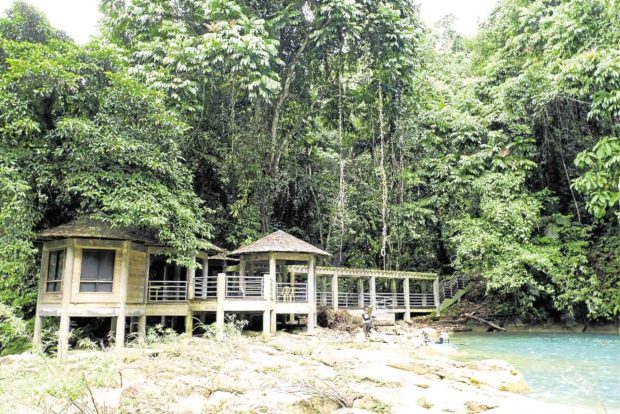3-tiered waterfalls in the wild forest
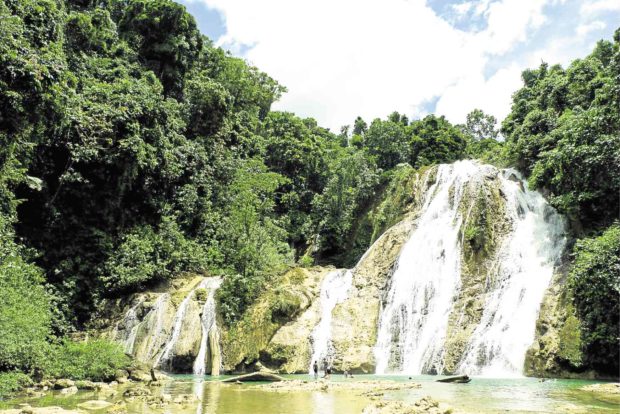
ALLURING SIGHT The cascading water of Bega Falls keeps tourists coming back to Prosperidad, Agusan del Sur’s capital town. —PHOTO BY AGUSAN DEL SUR TOURISM OFFICE
PROSPERIDAD, Agusan del Sur — The folkloric story of Bega Falls is lost among visitors enthralled by the three-tiered waterfalls cloaked by forest trees in the hinterland village of Mabuhay here.
Its name is derived from the local word biga, which means “flirt,” originating from an ancient narrative that the place was where a lovely Manobo woman was pushed to her death by her lover who thought she was flirting with another man.
The story, though, is not the reason people are flocking to Bega Falls, centerpiece of the 290-hectare conservation area transformed into Bega Park and Natural Resort. The park is in the midst of a lush forest, which can be reached only through a road that branches out of the national highway at Barangay Awa. The forest also nurtures rare species of flora and fauna.
Noradel Martinez, municipal tourism officer, said the park was developed not only as an ecotourism destination but also as a wildlife laboratory for scientific studies.
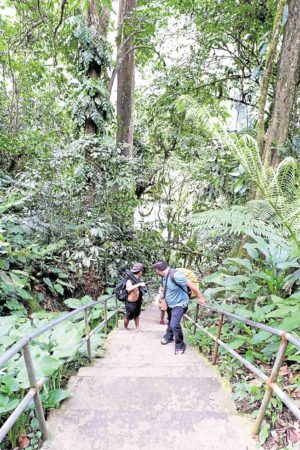
Tourists commune with nature along the concrete stairway to Bega Falls. —AGUSAN DEL SUR TOURISM OFFICE
Botanists’ discovery
Seldom-seen species of orchids are found at the Malipaga area near the boundary, according to botanist Ulysses Ferreras, a research associate at Philippine Native Plants Conservation Society.
Ferreras told the Inquirer that it was actually his assistant, Raymar Luceñana, who made the discovery.
The orchids belong to the Bulbophyllum genus, Ferreras said, citing collaborative studies with two other botanists, Raab Bustamante and Austrian Maximillian Kindler. These were different, though, from similar species because of their angular ovary ribs and the long acuminate for the caudate-shaped tips of sepals and petals, he said.
During their two-week survey in Mabuhay in 2014 and 2015, Ferreras and Luceñana discovered an abundance of two other rare orchids belonging to the Dipodium purpureum and Lecanorchis multiflora species. With them were local guides from the municipal tourism office.
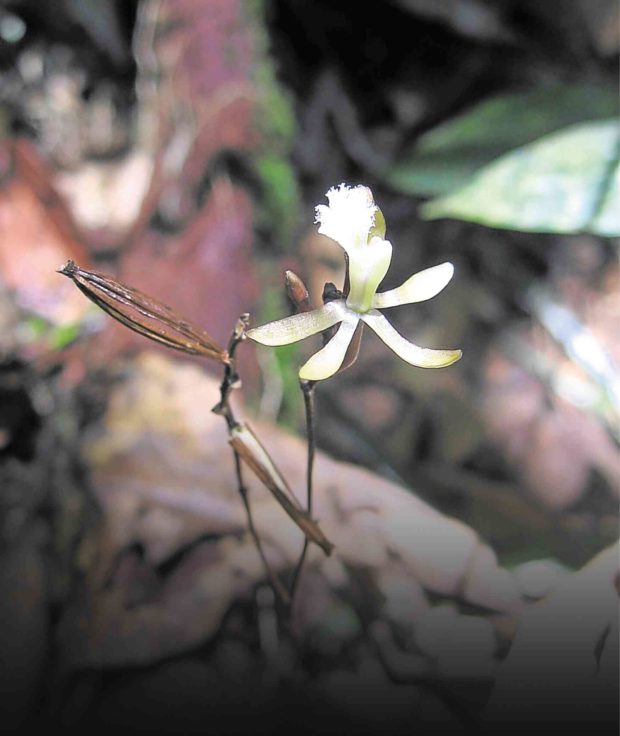
Lecanorchis multiflora, an orchid species thriving in other countries but found in the Philippines for the first time. —ULYSSES FERRERAS
Stairway of 472 steps
Most of the plants are near Undop Cave, a subterranean water chamber with an elevation of some 400 meters above sea level and the main source of water for the Bega river system, Martinez said.
For park visitors coming simply to appreciate nature, even descending the concrete stairway of 472 steps and eight landing stations to the waterfalls is already an awesome experience. Giant endemic trees, such as the toog (Petersianthus quadrialatus), magkuno (ironwood) and narra, thrive in the tropical rainforest.
Exotic hanging plants add ambiance to the forest breeze that refreshes those hiking the 1-kilometer distance from the resort’s welcome lounge. Trekkers can stay at the well-designed concrete cottages and view decks, and take a dip in the turquoise green waters.
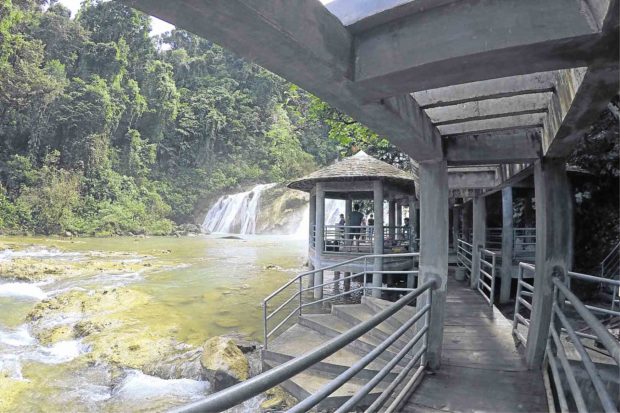
VIEW DECK The resort (above) only takes in 200 tourists a day as protective measure. — AGUSAN DEL SUR TOURISM OFFICE
Since 2017, some 15,000 people have reached the park after a concrete road network was completed from the junction of the national highway at Barangay Awa, according to Martinez.
The 5-kilometer network was realized through the Tourism Road Infrastructure Priority Program Criteria, a convergence project of the Department of Tourism and the Department of Public Works and Highways.
Only a maximum of 200 persons are allowed to explore the 14-hectare resort daily as part of conservation measures, Martinez said. No one is allowed to stray outside of the zone, except for researchers and documentary filmmakers.
A local ordinance outlaws smoking, alcoholic drinks and picking of plants. Visitors are reminded to properly dispose of their wastes.
“We don’t want to share the sad experience of Boracay and Palawan where natural beauty has started to erode because of the influx of tourists,” Martinez said.











